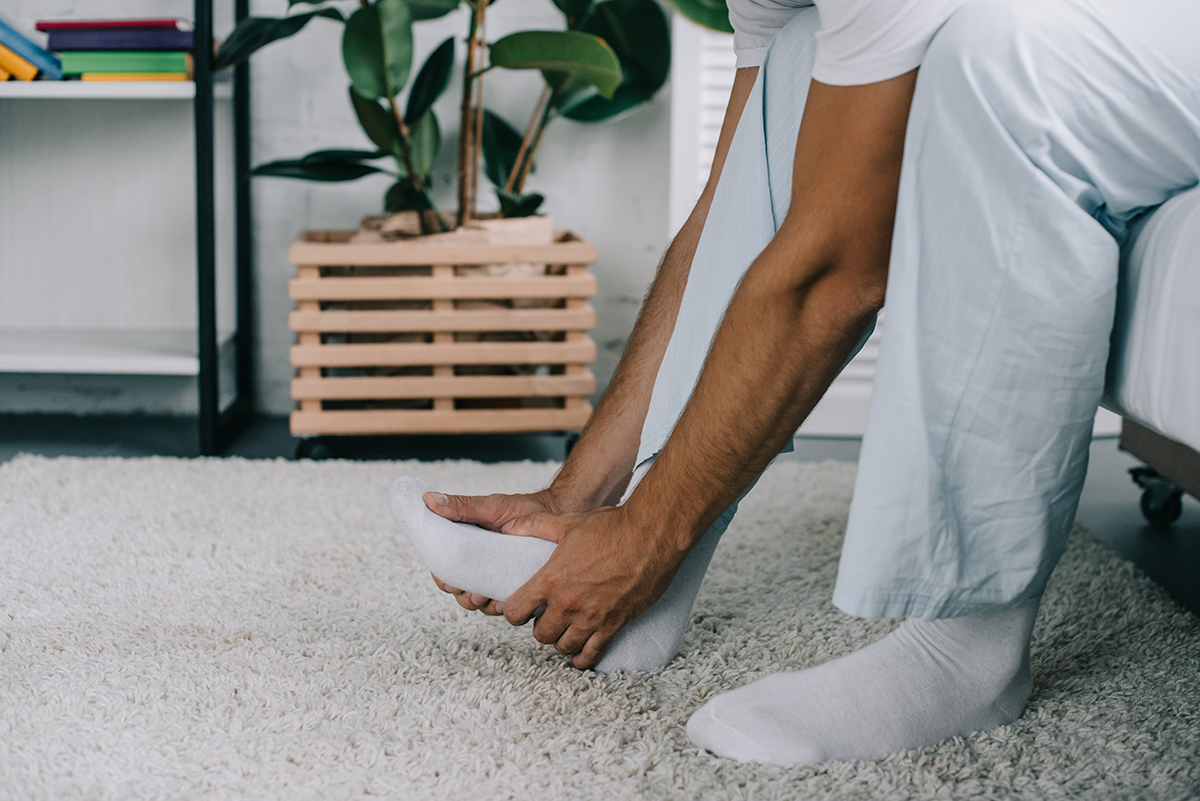Overly stretched, tiny tears can lead to inflammation and pain in the arch of the foot. This condition, called plantar fasciitis, accounts for nearly one million doctor visits per year. Our foot has a thick band of tissue called fascia that runs from our heel to our toe. This troublesome foot issue is actually more common in women than men. We need to spend time on our feet moving, so this foot problem, if left untreated, can cause excessive pain and greatly limit our mobility.
Contributing Factors
Plantar fasciitis is more common as we age (specifically between ages 40 and 60), but is also more likely to occur in someone who is overweight or constantly on their feet. It is very common in runners. Activities that are known for high rates of plantar fasciitis include ballet, dance, long-distance running, and ballistic jumping. There are a few other contributing factors which include wearing shoes that are worn out and have thin soles or wearing high-heels. The mechanics of how you walk (your stride) involves your foot position. If you have flat feet or a tight Achilles, the body will compensate for these dysfunctions which can lead to injury of the fascia.

Pain
Pain starts to occur near the heel towards the bottom of the foot. Most people feel the pain in the morning right when they get out of bed. This is known as “first-step pain”. This can also occur if you have been sitting for a long period of time and then stand up. The plantar fascia acts like an absorbing shock spring in our foot. Repetitive stretching and tearing of this area results in a stabbing pain.
Treatment
If pain persists, seeing a doctor can help detect this condition. He or she will check the tender areas of the foot. The good news is that plantar fasciitis does normally go away on its own. There are several treatment options. A doctor might prescribe anti-inflammatory medication or a steroid injection. Physical therapy and massage can help as well as shock wave therapy to stimulate blood flow. A Tenex procedure can remove scar tissue in the area or surgery can be done to remove the plantar fascia off of the heel bone. Wearing the right shoes or using shoe inserts oftentimes does the trick, so be sure to try these simple fixes first. Ice and soaking the heel can also help alleviate pain .
A good home remedy is freezing a foam cup of water then rubbing the top of the cup on the heel for 10 or so minutes. Stretching the calves and Achilles tendon can help over time and there are ways to tape the area of the foot to position the heel correctly with each step. Night splints worn to hold the foot at a 90 degree angle help when stretching the fascia.
There’s no doubt that we use and abuse our feet, bearing vast amounts of weight on them while performing all of our daily functions. As we walk from point A to point B, getting those 10,000 steps in, we must practice self-care from head to toe to heel. Sometimes foregoing that cute pair of shoes even at the gym is worth the fashion sacrifice to walk without pain.
Megan Johnson McCullough, owner of Every BODY’s Fit in Oceanside CA, is a NASM Master Trainer, AFAA group exercise instructor, and specializes in Fitness Nutrition, Weight Management, Senior Fitness, Corrective Exercise, and Drug and Alcohol Recovery. She’s also a Wellness Coach, holds an M.A. Physical Education & Health, and is a current doctoral candidate in Health and Human Performance. She is a professional natural bodybuilder, fitness model, and published author.
References
https://journals.lww.com/jaapa/Fulltext/2018/01000/Plantar_fasciitis__A_review_of_treatments.4.aspx
https://journals.sagepub.com/doi/full/10.1177/2473011419896763
https://academic.oup.com/occmed/article/65/2/97/1488760

